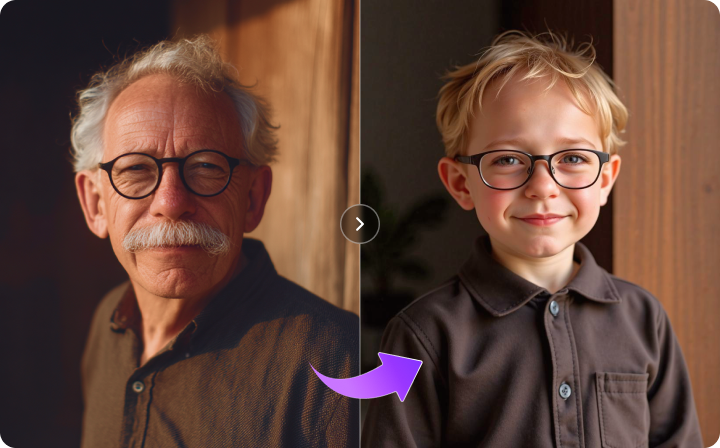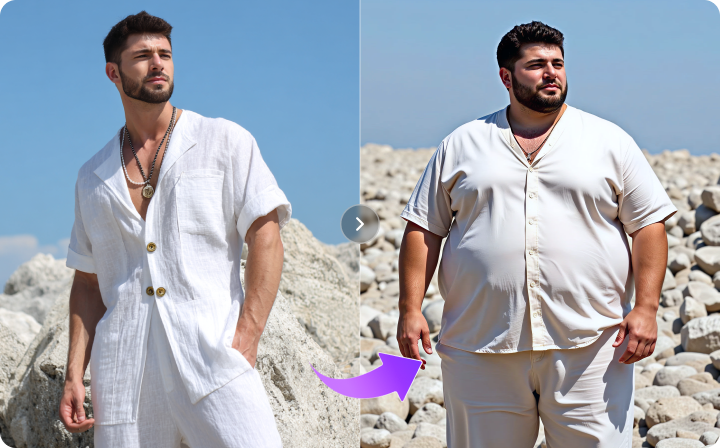Google Veo 3.1 AI Video Generator
- Google Veo 3.1 Coming Soon - What to Expect from Veo3.1
Google Veo 3.1
(also referenced as veo3.1) is the anticipated incremental upgrade to the existing
Veo 3
text-to-video +
audio generation model by
Google DeepMind /
Google AI.
While Veo 3 has already pushed the boundary by combining motion, visuals, and synchronized sound,
Veo 3.1 is expected to refine prompt adherence, increase resolution, reduce latency, and introduce new creative controls.
You can think of Veo 3.1
as a more polished, production-ready version of Veo 3 - not a radical redesign, but a set of enhancements to deliver higher quality,
more reliable output, and improved usability for creators within the Google AI ecosystem.
 4K Cinematic Quality
4K Cinematic Quality
 Faster Smart Rendering
Faster Smart Rendering
 Creative Control Suite
Creative Control Suite
















Key Features of Google Veo 3.1
Google Veo 3.1 (veo3.1) introduces a new generation of AI-powered text-to-video creation with major improvements in visual quality, control, and efficiency. Below are the six core features that define this update and position it as one of the most advanced models from Google AI.
Ultra-High Resolution & Realistic Motion
Veo 3.1 delivers stable 4K or high-definition 2160p output, offering cinematic detail, sharper textures, and smoother motion. This upgrade enables professional-grade visuals suitable for film, advertising, and creative media.
Faster Rendering & Smarter Performance
With optimized inference and model compression, Veo 3.1 drastically reduces rendering time and latency. Creators can now preview, iterate, and produce results faster-ideal for real-time storytelling and prototyping.
Superior Prompt Accuracy & Scene Continuity
One of Veo 3.1's biggest leaps is improved prompt adherence and scene coherence. The model better interprets complex instructions-camera angles, character behavior, lighting, and transitions-while maintaining object and identity consistency across scenes.
Enhanced Audio, Voice, and Sound Integration
Unlike many text-to-video models, Google Veo 3.1 continues Google's lead in synchronized audio generation. Expect richer soundscapes, more natural voices, ambient effects, and accurate lip sync for seamless audiovisual storytelling.
Creative Controls, Multi-Aspect & Style Customization
Veo 3.1 brings deeper creative freedom-supporting vertical 9:16, widescreen cinematic, and custom aspect ratios. New tools for style transfer, camera control, lighting, and transitions help creators fine-tune every aesthetic element.
Accessibility, Cost Efficiency & Responsible AI
Google AI emphasizes usability and safety. Veo 3.1 likely offers tiered modes (e.g., “Veo 3.1 Fast”), reducing generation cost while embedding advanced watermarking, attribution, and ethical safeguards to ensure transparent, responsible content creation.
Google Veo 3.1 vs Sora 2
| Dimension | Strength of Veo 3.1 | Strength of Sora 2 / Potential Veo 3.1 Challenge |
|---|---|---|
| Ecosystem / Integration | Veo 3.1 will be deeply integrated with Google AI, Gemini, Flow, and Imagen, benefiting from Google's infrastructure and data. | Sora 2 may have stronger alignment with OpenAI's ecosystem, but less specialization in video/audio generation. |
| Audio / Sound Fidelity | Veo already supports native audio. Veo 3.1 is likely to further refine voice, effects, sync, and ambient sound. | Sora 2 might lag in audio realism or require external post-processing or sound stitching. |
| Prompt Complexity & Control | With its latest improvements, Veo 3.1 may better handle multi-character scenes, camera direction, and sequential chaining. | Sora 2 may excel at understanding language and high-level narrative logic, but may offer less granular video control. |
| Stability / Consistency | Veo 3.1 prioritizes reduced artifacts, flicker, and scene-to-scene inconsistencies for smoother long sequences. | Sora 2 may render smoother small scenes but could face challenges in maintaining stable composition at scale. |
| Access & Cost | Google's model may offer multiple tiers (“Preview”, “Fast”, “Full”), offering flexibility and integration via Vertex AI. | Sora 2 could limit early access or carry higher compute-based pricing, though might undercut per-second costs later. |
| Community / Adoption Speed | Many creators are already experimenting with Veo 3 inside Google AI, giving Veo 3.1 strong early-adopter momentum. | Sora 2 could attract developers from OpenAI's base but may have a steeper learning curve for video-centric workflows. |
In short: Veo 3.1 is poised to lead in realism, audio-visual integration, and creative control, while Sora 2 may remain strong in general-purpose, language-based video generation and accessibility.
Google Veo 3.1 vs Veo 3 & Veo 3 Fast
To understand Veo 3.1's value, it helps to compare it to its predecessors Veo 3 and Veo 3 Fast.
| Model | Strengths / Use Cases | Limitations (vs what Veo 3.1 aims to improve) |
|---|---|---|
| Veo 3 (baseline) |
Already offers high-fidelity video + synchronized audio, realistic motion, and solid prompt fidelity. |
Occasional prompt mismatch, visible artifacts, limited duration, slower speed, higher compute cost, and less flexible aspect ratios. |
| Veo 3 Fast | Lower-cost, faster version of Veo 3 - optimized for creators needing quick generation and testing cycles. | Lower resolution, more visual artifacts, and reduced prompt adherence compared to Veo 3 and Veo 3.1. |
| Veo 3.1 (future) | Builds upon both predecessors - aiming to sustain high quality while improving rendering speed, prompt fidelity, 4K resolution, audio consistency, cost efficiency, and continuity. | The main risk is that optimizing for speed and affordability could slightly reduce creative or cinematic fidelity - striking balance is key. |
In summary: Veo 3.1 represents the “sweet spot” of the Veo lineup - retaining the premium video + audio fidelity of Veo 3 while bridging toward the speed and affordability of Veo 3 Fast.
FAQs About
Google Veo 3.1
When will Google Veo 3.1 (veo3.1) be released?




At present, Google has not publicly confirmed an exact launch date. Industry observers expect a gradual rollout in late 2025 or early 2026, possibly first as a preview within the Google AI / Vertex AI environment. Watch official Google DeepMind / Google AI announcements for confirmation.
Will Veo 3.1 be free or require a paid subscription?




Veo 3.1 will likely follow a tiered subscription model (e.g. “Veo 3.1 Preview / Veo 3.1 Fast / Veo 3.1 Pro”) under Google AI's pricing schemes. It may also integrate usage credits via Google Cloud / Vertex AI. Expect that advanced features (higher res, longer video, priority speed) will require paid access.
Can I upgrade from Veo 3 (or Veo 3 Fast) to Veo 3.1 seamlessly?




In most cases yes - Google should support backward compatibility for prompts generated under Veo 3. Existing users may get priority access or migration support. However, some prompts or media assets might need adaptation to the new controls or constraints of Veo 3.1.
Will prompts written for Veo 3 still work in Veo 3.1?




Generally yes. Basic prompts should translate well, but to take advantage of new Veo 3.1 features (e.g. extended control, finer camera commands, vertical aspect support), prompt upgrades or additional parameters may be needed to unlock the full benefits.
What limitations might Veo 3.1 still have?




Some plausible limitations include:
- Maximum video length per clip (e.g. 10–20 seconds)
- Occasional artifacts or visual inconsistencies in complex scenes
- Challenges in generating fully realistic faces or hands
- Compute / cost constraints for ultra-high resolution or intricate motion
- Content safety, watermarking, and attribution constraints to prevent misuse

